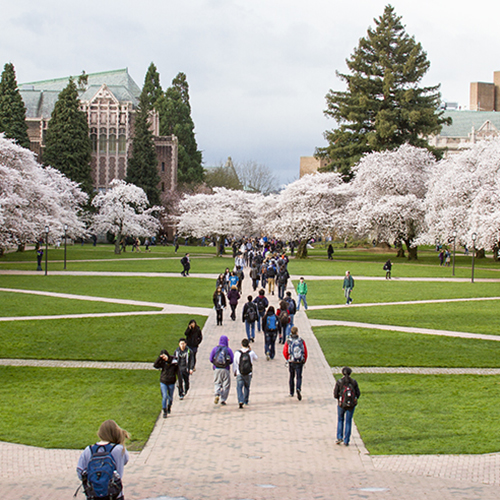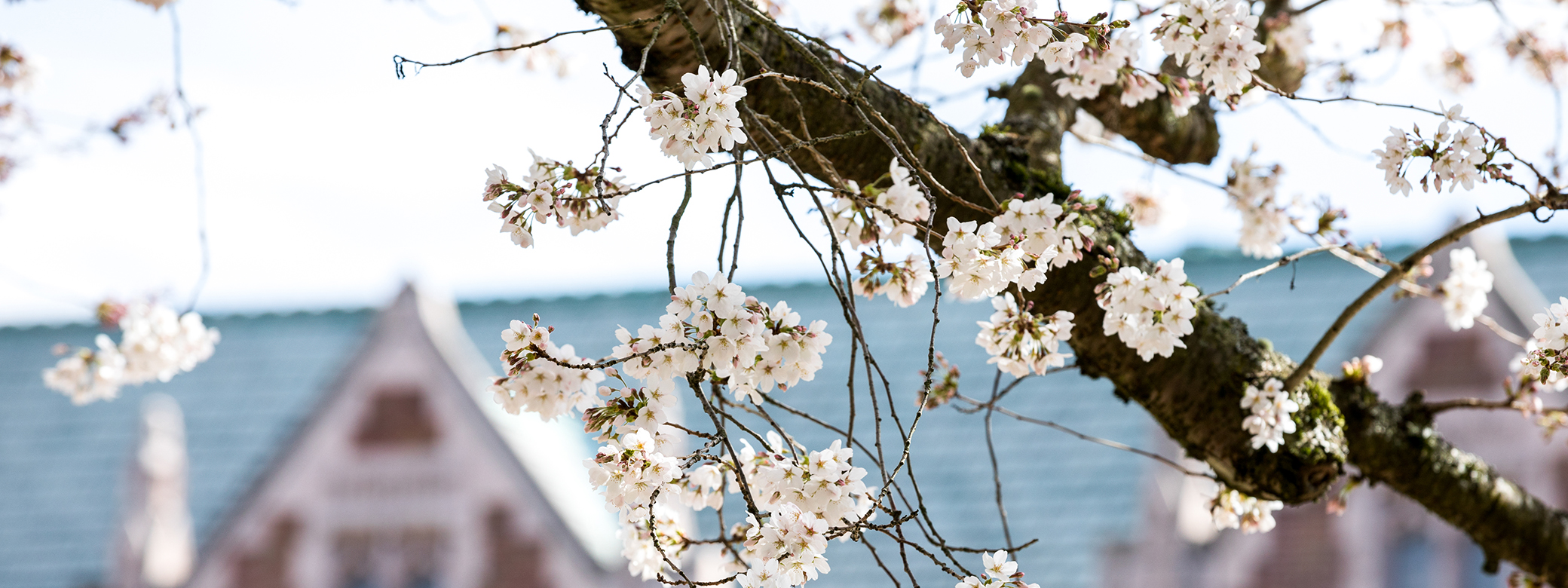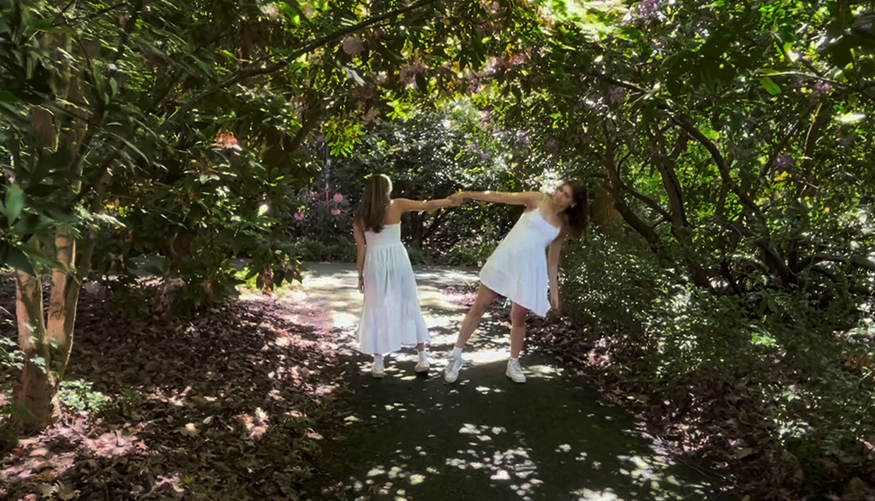From Greig Garden to the Art Building courtyard, students in "Activating Place" — a Department of Dance course — created dances for public places on the University of Washington's Seattle campus. Check out a few moments from their performances in this video.
On the University of Washington’s Seattle campus this spring, students danced in wooded glens and open lawns, in buildings and courtyards. The performances were a culminating assignment for a Department of Dance course, “Activating Place,” on the history of performance in site-specific settings.
Jennifer Salk, professor of dance in the UW College of Arts & Sciences, created the five-credit course as a special topics section of DANCE 345/545: Contemporary Dance Histories. In addition to assigned readings, viewings, extensive discussion, research, and writing — including a final research paper — the students created embodied work at various campus locations. Here Salk answers questions about the course.
What led you to create this course?

I do site work myself. I had briefly covered site work in a survey course about dance history, and I saw this special-topics course as an opportunity to learn more about the history of site work. When you make a new course, it’s not just about the students; you’re often trying to learn something new for yourself too. It’s been incredible to uncover inspiring artists that I would never have known about otherwise, who don’t get the attention they deserve.
The students created short site-specific works at the end of the quarter. How did you prepare them?
The biggest thing we talked about is the concept of place. Artists doing site work don't visit a site, look around, and then just make a piece. Whatever your space is, you need to know that space intimately. To help the students learn how to do that, we went to Gould Hall, my favorite building on campus, and we excavated — a process that involves looking at all aspects of a space and creating an archive of all your research on the space — how people interact with the space, how the light hits, the sounds in the space. Later they did a full excavation of their chosen site, visiting the site at different times of day, thinking about the space in terms of movement.
What were some of their chosen sites?
It’s a long list: Grieg Garden, Sylvan Grove, Henry Art Gallery stairwells, outside Gowan Hall, the Art Building courtyard, Parrington Lawn, Gould Hall… there were a few other places as well.
The thing I try to impart to the students is that the physical space is a collaborator.
Were all the students in the course dance majors?
Majors and minors had first priority since dance history is a requirement for the major, but we also had a computer science major with no dance background, four architecture majors — two double majoring in dance — and students who had not yet declared a major. It was a wonderful mix. I made sure that all the experiential work was approachable for any level of sophistication, which made it really fun. If you create a structure where the students can all work together in groups, but from all their different perspectives, it's incredible what can happen.
How does performing in a public space inform the choreography?
The thing I try to impart to the students is that the physical space is a collaborator. When I make a site work, I create a whole new movement vocabulary, things I've never done before. You want to create work that couldn't be on a stage, it can only be here. They did really well with that. No one just danced around in the space.
The audience interaction must also be quite different.
What's great about site work is that you get to turn people on to art when they normally wouldn't have access to it. Anybody walking by can experience it. They can stop and watch for a while, or they can just walk past, but they've had some kind of artistic experience that they otherwise wouldn't have had. Site work also makes people appreciate the spaces they walk in every day. So many people have told me, after a site-based performance, that they've never seen the space in that way before and now when they pass that space, they always think of it differently.
More Stories

Democracy by the Numbers
Mathematics and Democracy, an undergraduate mathematics course, explores the role of math in many aspects of democracy, from elections to proportional representation.

Read or Listen to Faculty Favorites
Looking for book or podcast recommendations? We asked faculty who've been featured in Perspectives newsletter during the past academic year to suggest a personal favorite.

Four Students Shine as 2024 Dean's Medalists
Meet the four new graduates honored as College of Arts & Sciences Dean's Medalists for 2024.

